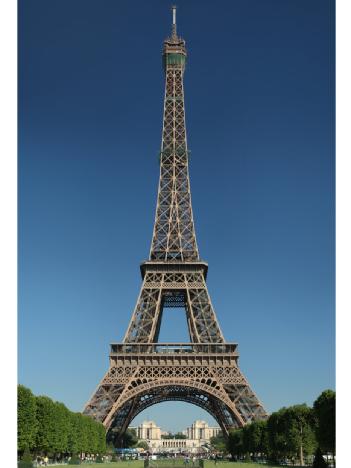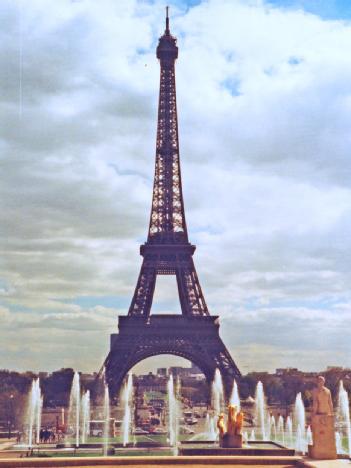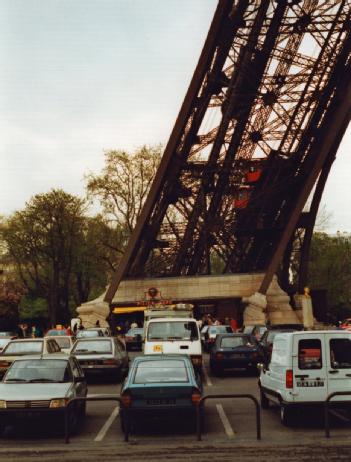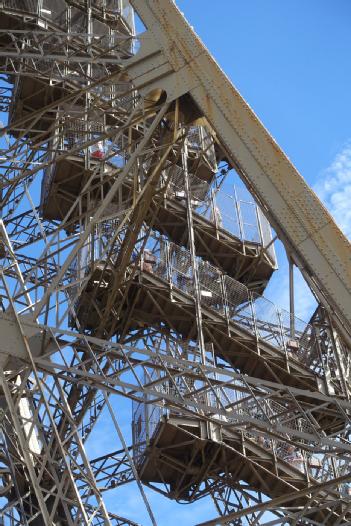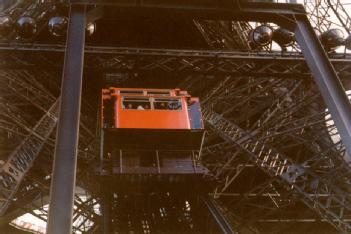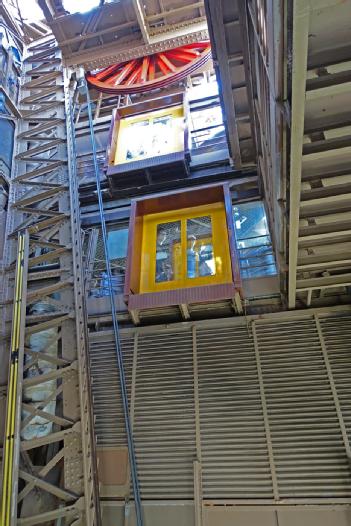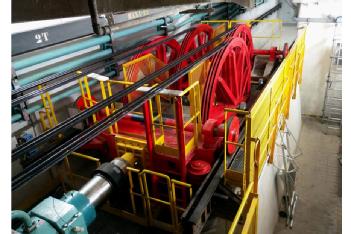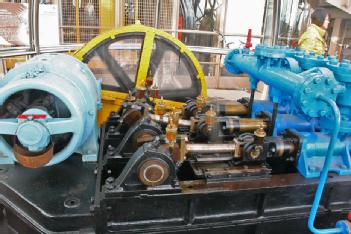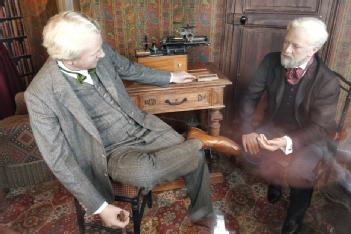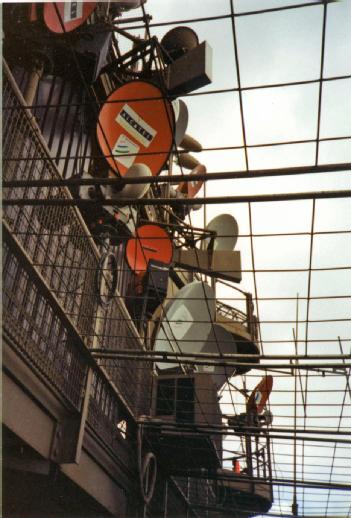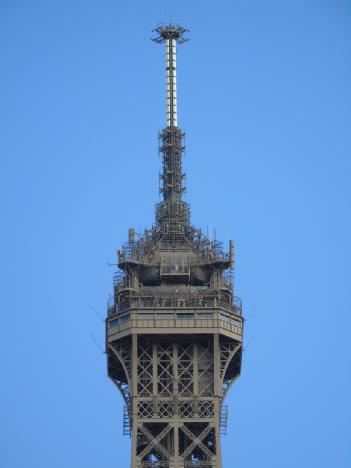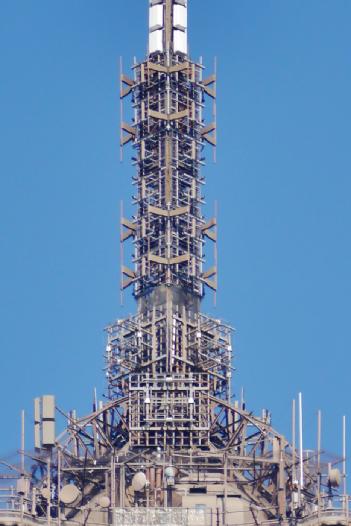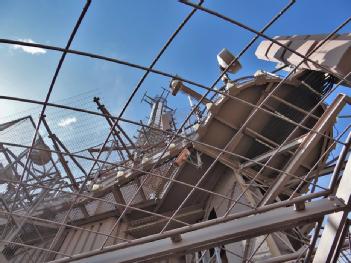
 |
Tour Eiffel - Eiffelturm - Eiffel tower |
75007 Paris, Francia (Île-de-France) |
|
| Indirizzo |
Champ de Mars
5 Av. Anatole France |
| Spazio espositivo | - purtroppo ancora non noto |
Architecture
- Cranes and Lifts
- Transmitting and Studio technique
- Patrimonio dell'umanità
|
Orario d'apertura
|
voir le calendrier et les horaires d'ouverture sur la page d'accueil de la tour Eiffel.
see Calendar and Opening Times at Eiffel tower homepage
|
||||
|
Status dal 05/2023
|
with lift to Second floor: Adult: 18,10€; Youth (12-24): 9,00€; Child (4-11), Disabled: 4,50€ with lift to top: Adult: 28.30€; Youth (12-24): 14,10€; Child (4-11), Disabled: 7,10€ by stairs to Second floor: Adult: 11,30€; Youth (12-24): 5,60€; Child (4-11): 2,80€ by stairs 2nd floor + lift to top Adult: 21,50€; Youth (12-24): 10,70€; Child (4-11): 5,40€ ascenseur 2ème étage: Adulte: 18,10€; Jeune (12-24): 9,00€; Enfant (4-11), Handicap: 4,50€ ascenseur Sommet: Adulte: 28,30€; Jeune (12-24): 14,10€; Enfant (4-11), Handicap: 7,10€ escaliers 2ème étage: Adulte: 11,30€; Jeune (12-24): 5,60 €; Enfant (4-11): 2,80€ escalier 2ème étage + ascenseur Sommet Adulte: 21,50€; Jeune (12-24): 10,70 €; Enfant (4-11): 5,40€ |
||||
| Contatti |
|
||||
| Pagina web | www.toureiffel.paris/fr | ||||
| Come arrivare |
La Torre Eiffel si trova nel 7° arrondissement all'estremità nord-occidentale del Campo di Marte, vicino alle rive della Senna. La Torre Eiffel può essere raggiunta da diverse linee della metropolitana: Stazione M9 "Trocadéro" (20 minuti a piedi) Stazione M6 "Bir-Hakeim" (10 minuti a piedi) Stazione M8 “Ecole Militaire” (15 minuti a piedi) La Torre Eiffel è raggiungibile con la linea RER C: “Cham de mars - Tour Eiffel” (7 minuti a piedi). La Torre Eiffel è raggiungibile con diverse linee di autobus: 82 e 30 "Tour Eiffel" (4 minuti a piedi) 42 "Tour Eiffel" (5 minuti a piedi) 69 e 86 “Champ de Mars” (6 minuti a piedi) 72 "Tour Eiffel" (15 minuti a piedi) Accesso alla Torre Eiffel attraverso la Senna in barca: Batobus “Tour Eiffel” (5 minuti a piedi) Puoi noleggiare biciclette presso le stazioni Vélib 24 ore su 24, 7 giorni su 7. È molto piacevole pedalare per le strade di Parigi fino alla Torre Eiffel! Se vuoi raggiungere la Torre Eiffel in auto, ti consigliamo di lasciare il tuo veicolo in uno dei parcheggi vicino alla Torre Eiffel. Ad esempio, il parcheggio Quai Branly si trova a meno di 300 m dalla Torre Eiffel. Per raggiungere l'ascensore, vai ai pilastri EST o OVEST. I visitatori muniti di apposito biglietto devono accodarsi nella fila contrassegnata dalla bandierina verde per raggiungere direttamente il pilone d'ingresso. I visitatori sprovvisti di biglietto devono fare la fila alle biglietterie (bandiera gialla). Le biglietterie di entrambi i pilastri sono normalmente aperte. I visitatori che vogliono salire le scale devono recarsi al pilastro SUD (bandiera blu). |
Esempi di apparecchi visionabili nel museo:
| Descrizione | Wikipedia: The tower is 330 metres tall, about the same height as an 81-storey building, and the tallest structure in Paris. Its base is square, measuring 125 metres on each side. During its construction, the Eiffel Tower surpassed the Washington Monument to become the tallest human-made structure in the world, a title it held for 41 years until the Chrysler Building in New York City was finished in 1930. It was the first structure in the world to surpass both the 200-metre and 300-metre mark in height. Due to the addition of a broadcasting aerial at the top of the tower in 1957, it is now taller than the Chrysler Building by 5.2 metres . Excluding transmitters, the Eiffel Tower is the second tallest free-standing structure in France after the Millau Viaduct. The tower has three levels for visitors, with restaurants on the first and second levels. The top level's upper platform is 276 m above the ground – the highest observation deck accessible to the public in the European Union. Tickets can be purchased to ascend by stairs or lift to the first and second levels. Passenger lifts The arrangement of the lifts has been changed several times during the tower's history. Given the elasticity of the cables and the time taken to align the cars with the landings, each lift, in normal service, takes an average of 8 minutes and 50 seconds to do the round trip, spending an average of 1 minute and 15 seconds at each level. The average journey time between levels is 1 minute. The original hydraulic mechanism is on public display in a small museum at the base of the east and west legs. Because the mechanism requires frequent lubrication and maintenance, public access is often restricted. Communications The tower has been used for making radio transmissions since the beginning of the 20th century. Until the 1950s, sets of aerial wires ran from the cupola to anchors on the Avenue de Suffren and Champ de Mars. These were connected to longwave transmitters in small bunkers. In 1909, a permanent underground radio centre was built near the south pillar, which still exists today. On 20 November 1913, the Paris Observatory, using the Eiffel Tower as an aerial, exchanged wireless signals with the United States Naval Observatory, which used an aerial in Arlington County, Virginia. The object of the transmissions was to measure the difference in longitude between Paris and Washington, D.C. Today, radio and digital television signals are transmitted from the Eiffel Tower. Digital television A television antenna was first installed on the tower in 1957, increasing its height by 18.7 m. Work carried out in 2000 added a further 5.3 m, giving the current height of 324 m. Analogue television signals from the Eiffel Tower ceased on 8 March 2011. |
| Descrizione (altra) |
Die Zahlen Les chiffres |
[dsp_museum_detail.cfm]
| Conformità dei dati | Ulteriori informazioni |
 toureiffel.paris
toureiffel.paris 